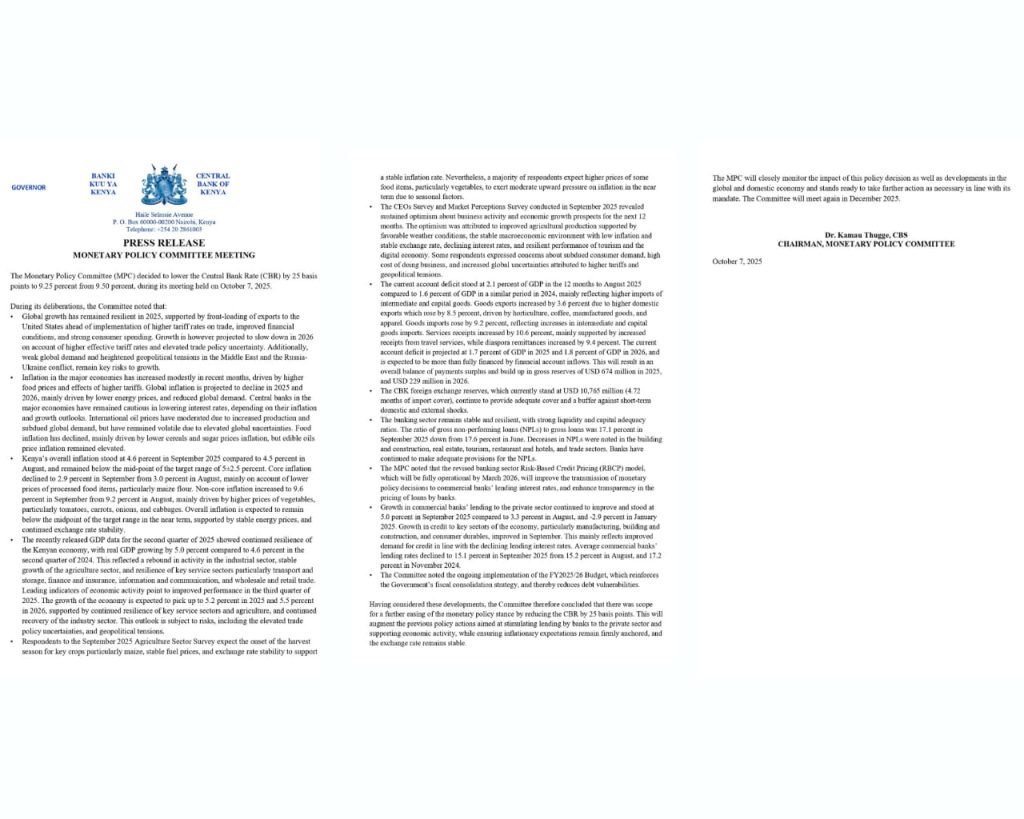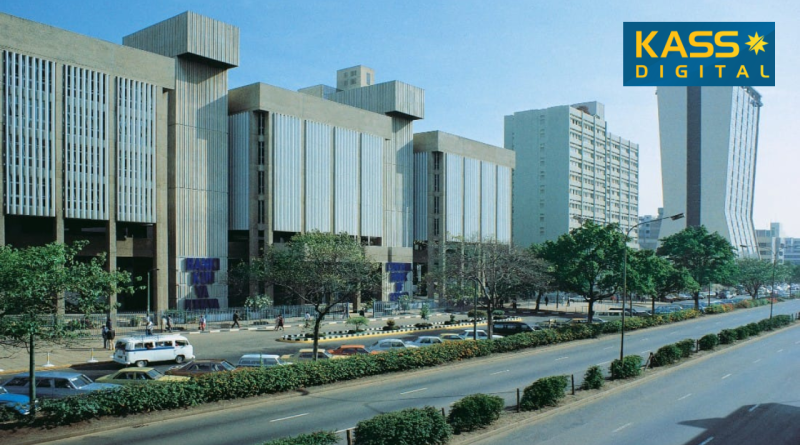CBK cuts policy rate to 9.25% in bid to support growth amid inflation stability
By Chemtai Kirui || Kass Digital
NAIROBI, Oct 8 — The Central Bank of Kenya (CBK) has lowered its benchmark lending rate by 25 basis points to 9.25%, marking its eighth consecutive rate cut, as inflation remains well within the target band, the Monetary Policy Committee (MPC) said.
The MPC, the key decision-making organ within CBK that determines how “tight” or “loose” the money supply should be, said in a press release Tuesday that the move is designed to stimulate private sector lending, ease credit costs, and support economic activity while ensuring inflation expectations remain anchored.
CBK Governor and MPC Chair Dr. Kamau Thugge said the committee had overseen a series of cuts, citing that inflation — at 4.6% in September — remains within the preferred 2.5% –7.5% range. The central bank also slightly raised its 2026 economic growth forecast to 5.5%, up from 5.4%, while maintaining the 2025 forecast at 5.2%.
Officials said the reduction aligns with the country’s need for lower borrowing costs to support sectors hit by global headwinds. With credit growth still sluggish, policymakers hope a looser monetary stance will encourage banks to lend more to businesses and households.

What this means for the economy and consumers
A lower policy rate typically translates into reduced lending rates for consumers and enterprises. This could spur borrowing for mortgages, business expansion, and infrastructure financing. However, the transmission from policy rate to actual loan rates depends on banking sector competitiveness and risk pricing.
The rate cut also complements the government’s broader fiscal measures — such as the conversion of the Standard Gauge Railway (SGR) loan from U.S. dollars to yuan — aimed at easing external pressure and lowering interest costs.
The MPC said it will continue to closely monitor global and domestic developments, including currency movements, external pressures, and inflation trends, and stands ready to adjust policy as needed.
Critics warn that repeated cuts narrowing the central bank’s rate cushion could limit room for response if inflation rises or capital outflows increase. Others note the policy’s effectiveness will depend on whether commercial banks pass on the lower rates to borrowers instead of maintaining wide lending spreads.
The next MPC meeting is scheduled for December 2025, when the committee will assess the impact of the recent cuts and determine whether further easing is warranted.




